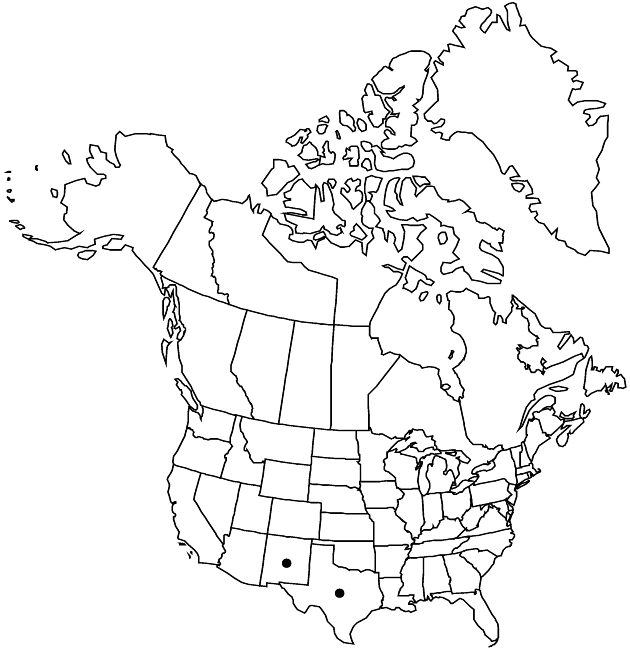Difference between revisions of "Bahia pedata"
Smithsonian Contr. Knowl. 3(5): 123. 1852.
FNA>Volume Importer |
imported>Volume Importer |
||
| Line 45: | Line 45: | ||
|publication year=1852 | |publication year=1852 | ||
|special status= | |special status= | ||
| − | |source xml=https:// | + | |source xml=https://bibilujan@bitbucket.org/aafc-mbb/fna-data-curation.git/src/bb6b7e3a7de7d3b7888a1ad48c7fd8f5c722d8d6/coarse_grained_fna_xml/V19-20-21/V21_966.xml |
|tribe=Asteraceae tribe Heliantheae | |tribe=Asteraceae tribe Heliantheae | ||
|subtribe=Asteraceae (tribe Heliantheae) subtribe Chaenactidinae | |subtribe=Asteraceae (tribe Heliantheae) subtribe Chaenactidinae | ||
Revision as of 21:03, 27 May 2020
Annuals or biennials, 15–70(–120+) cm. Stems mostly erect. Leaves all or mostly alternate (proximalmost sometimes opposite); blades simple or 1–2-ternately lobed, lobes ovate or obovate to lanceolate or oblanceolate, 2–25 × 1–6(–8) mm, faces sparsely scabrellous, usually gland-dotted as well. Involucres 4–6+ × 8–12+ mm. Ray florets 10–15; corolla laminae 5–6(–10+) mm. Disc florets 40–80+; corollas 3–3.5 mm. Cypselae 2.5–3.5+ mm, faces ± hirtellous; pappi of ± spatulate to oblanceolate, apically ± muticous scales 1–1.5 mm. 2n = 24.
Phenology: Flowering (May–)Jul–Aug(–Nov).
Habitat: Sandy soils, limestone, openings in grasslands and pinyon-juniper woodlands
Elevation: 900–2000 m
Distribution

N.Mex., Tex., Mexico (Chihuahua, Coahuila).
Discussion
Selected References
None.
Lower Taxa
None.